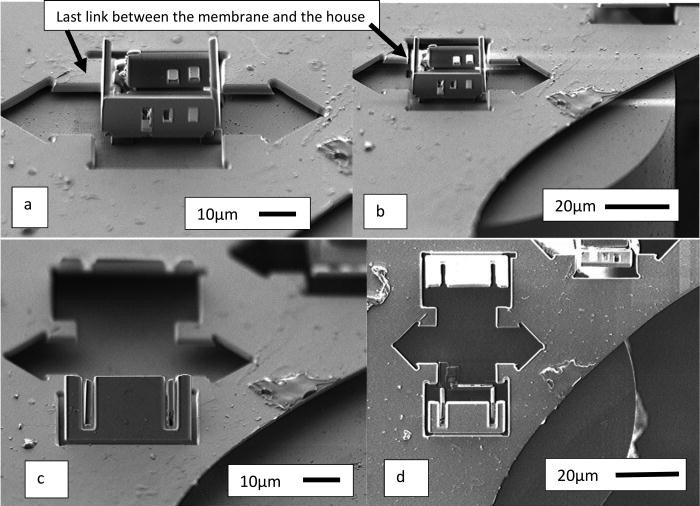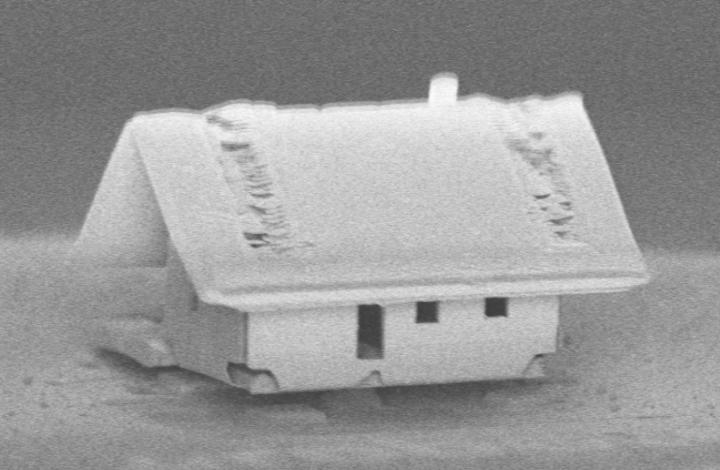Technology
AWS is adding a new kind of virtual machine to its growing list of EC2 options. These new machines feature local NVMe storage, which offers significantly faster throughput than standard SSDs.
These new so-called C5d instances join the existing lineup of compute-optimized C5 instances the service already offered. AWS cites high-performance computing workloads, real-time analytics, multiplayer gaming and video encoding as potential use cases for its regular C5machines and with the addition of this faster storage option, chances are users who switch will see even better performance.
Since the local storage is attached to the machine, it&ll also be terminated when the instance is stopped, so this is meant for storing intermediate files, not long-term storage.

Both C5 and C5d instances share the same underlying platform, with 3.0 GHz Intel Xeon Platinum 8000 processors.
The new instances are now available in a number of AWSU.S. regions, as well as in the serviceCanada regions. Prices are, unsurprisingly a bit higher than for regular C5 machines, starting at $0.096 per hour for the most basic machine with 4 in AWSOregon region, for example. Regular C5 machines start at $0.085 per hour.
Itworth noting that the EC2 F1 instances, which offer access to FPGAs, also use NVMe storage. Those are highly specialized machines, though, while the C5 instances are interesting to a far wider audience of developers.
On top of the NVMe announcement, AWS today also noted that its EC2 Bare Metal Instances are now generally available. These machines provide direct access to all the features of the underlying hardware, making them ideal for running applications that simply can&t run on virtualized hardware and for runningsecured container clusters. These bare metal instances also offer support for NVMe storage.
- Details
- Category: Technology
Read more: AWS adds more EC2 instance types with local NVMe storage
Write comment (96 Comments)All around the world, hip young people are competing to see who can live in the tiniest, quirkiest, twee-est house. But this one has them all beat. Assembled by a combination of origami and nanometer-precise robot wielding an ion beam, this tiniest of houses measures about 20 micrometers across. For comparison, thatalmost as small as a studio in the Lower East Side of Manhattan.
Itfrom the Femto-ST Institute in France, where the tiny house trend has clearly become an obsession. Really, though, the researchers aren&t just playing around. Assembly of complex structures at this scale is needed in many industries: building a special radiation or biological sensor in place on the tip of an optical fiber could let locations be probed or monitored that were inaccessible before.
 The house is constructed to show the precision with which the tools the team has developed can operate. The robot that does the assembly, which they callμRobotex, isn&t itself at the nano scale, but operates with an accuracy of as little as 2 nanometers.
The house is constructed to show the precision with which the tools the team has developed can operate. The robot that does the assembly, which they callμRobotex, isn&t itself at the nano scale, but operates with an accuracy of as little as 2 nanometers.
The operator of μRobotex first laid down a layer of silica on the tip of a cut optical fiber less than the width of a human hair. They then used an ion beam to cut out the shape of the walls and add the windows and doors. By cutting through some places but only scoring in others, physical forces are created that cause the walls to fold upwards and meet.
 Once they&re in place, μRobotex switches tools and uses a gas injection system to attach those surfaces to each other. Once done, the system even &sputters& a tiled pattern on the roof.
Once they&re in place, μRobotex switches tools and uses a gas injection system to attach those surfaces to each other. Once done, the system even &sputters& a tiled pattern on the roof.
Having built this house as a proof of concept, the team is now aiming to make even smaller structures on the tips of carbon nanotubes — ones that could comfortably pass through the housewindows.
The researchers published their methods in the Journal of Vacuum Science and Technology.
- Details
- Category: Technology
Read more: Tiny house trend advances into the nano scale
Write comment (94 Comments)Baidustocks took a hit earlier today after the company announced that its Qi Lu is stepping down from his job as president/COO after just a year and a half. In a press release tied to the news, the executive cited personal reasons for his decision to &transition& to a lesser role.
&Baidu is a great company with strong talent and deep technologies,& Lu said in the statement. &I am highly optimistic on Baidufuture and will continue to support Baidu, while spending more time with my family in the U.S. For my next steps, I plan to work in research and investment areas, to help advance our shared mission to make a complex world simpler through technology.&
Regardless of his stated reasons, however, the move is seen as a big blow for the Chinese companyambitions to grow beyond its search engine roots. The former Microsoft executive, who will maintain his position on Baiduboard, was seen as the driving force in the companyAI ambitions, leading the charge into self-driving cars and other emerging technologies.
Baidu has yet to name a replacement for Lu, who is expected to step down in July. The companyhigh-tech ranks have experienced a bit of turmoil in the past year and change, as its chief scientist and head of autonomous driving have vacated their roles for other gigs.
- Details
- Category: Technology
Read more: Baidu’s top AI exec is stepping down
Write comment (100 Comments)A number of people are complaining about Sinemia not delivering them their movie membership cards within the seven-day timeframe the company said it would. Although Sinemia has charged people for their memberships, the company has not been able to deliver the membership cards in a timely manner.
&We have seen strong demand for our new Sinemia membership plans and, while our processing operations have increased production, delivery times can be expected to be longer than usual,& Sinemia CEO Rifat Oguz told TechCrunch in a statement. &We greatly appreciate our subscribers& patience while we work on preparing their cards. Please note that subscribers first month of service will not begin until their card arrives.&
Sinemia, which launched its low-cost plans earlier this month, says to expect your card to be delivered within seven days. Herethe full text of the email Sinemia sends customers after their purchase:
We have received your payment.
We are now preparing your private card for yourSinemiaPremium membership. Your card will be delivered to the shipping units within generally in 7 days, although it can vary depending on the campaign periods. Please note that the estimated time of delivery may also vary depending on the destination and workload of the shipping company at the time. You may start enjoying movie experience withSinemiaPremium right after completing your Premium card activation. You can activate your new Premium card viaSinemiamobile application or from your membership page. If you don&t have a password yet, you can create one fromhere. Your membership will begin right after your card is delivered.
But this is unacceptable for some customers, with some requesting refunds and others disputing the charge to their credit card company. Sinemia, however, says it has not provided any refunds.
- Details
- Category: Technology
Read more: MoviePass competitor Sinemia can’t keep up with demand
Write comment (96 Comments)The highlight of Google I/O keynote earlier this month was the reveal of Duplex, a system that can make calls to set up a salon appointment or a restaurant reservation for you by calling those places, chatting with a human and getting the job done. That demo drew lots of laughs at the keynote, but after the dust settled, plenty of ethical questions popped up because of how Duplex tries to fake being human. Over the course of the last few days, those were joined by questions from people like writer John Gruber about whether the demo was staged or edited.Axios then asked Google a few simple questions about the demo that Google has refused to answer.
We have reached out to Google with a number of very specific questions about this and have not heard back. As far as I can tell, the same is true for other outlets that have contacted the company.
If you haven&t seen the demo, take a look at thisbefore you read on.
So did Google fudge this demo Here is why people are asking and what we know so far:
During his keynote, Google CEO Sundar Pichai noted multiple times that we were listening to real calls and real conversations (&What you will hear is the Google Assistant actually calling a real salon.&). The company made the same claims in a blog post(&While sounding natural, these and other examples are conversations between a fully automatic computer system and real businesses.&).

Google has so far declined to disclose the name of the businesses it worked with and whether it had permission to record those calls. California is a two-consent state, so our understanding is that permission to record these calls would have been necessary (unless those calls were made to businesses in a state with different laws). So on top of the ethics questions, there are also a few legal questions here.
We have some clues, though. In the blog post, Google Duplex lead Yaniv Leviathan and engineering manager Matan Kalman posted a picture of themselves eating a meal &booked through a call from Duplex.& Thanks to the wonder of crowdsourcing and a number of intrepid sleuths, we know that this restaurant was Hongs Gourmet in Saratoga, California. We called Hongs Gourmet last night, but the person who answered the phone referred us to her manager, who she told us had left for the day. (We&ll give it another try today.)
Sadly, the rest of Googleaudio samples don&t contain any other clues as to which restaurants were called.
What prompted much of the suspicion here is that nobody who answers the calls from the Assistant in Googlesamples identifies their name or the name of the business. My best guess is that Google cut those parts from the conversations, but ithard to tell. Some of the audio samples do however sound as if the beginning was edited out.
Google clearly didn&t expect this project to be controversial. The keynote demo was clearly meant to dazzle — and it did so in the moment because, if it really works, this technology represents the culmination of years of work on machine learning. But the company clearly didn&t think through the consequences.
My best guess is that Google didn&t fake these calls. But it surely only presented the best examples of its tests. Thatwhat you do in a big keynote demo, after all, even though in hindsight, showing the system fail or trying to place a live call would have been even better (remember Steve JobStarbucks call).
For now, we&ll see if we can get more answers, but so far all of our calls and emails have gone unanswered. Google could easily do away with all of those questions around Duplex by simply answering them, but so far, thatnot happening.
- Details
- Category: Technology
Read more: What we know about Google’s Duplex demo so far
Write comment (96 Comments)Every tech founder worth their title knows that investors, customers and media exposure form the life blood of every early-stage startup. And thereno better way to place your startup in front of these three essential groups than to exhibit inStartup AlleyatDisrupt San Francisco 2018. The conference takes place on September 5-7, but if you want to secure your spot you need to apply to purchase a Startup Alley Exhibitor Packagebefore the application window closes.
Startup Alley at Disrupt SF &18 will feature more than 1,200 highly vetted, early-stage startups showcasing the very latest in tech products, platforms and services spanning the tech spectrum. You can expect more than 10,000 attendees to pass through the Alley, including more than 400 media outlets.
Exhibit your company in the Alleyenergetic atmosphere of networking, collaboration and possibility. According to Crunchbase, Startup Alley exhibitors at Disrupt SF 2017 raised more than $37 million in seed and Series A funding within the four months following the conference.
The Startup Alley Exhibitor package includes a one-day 4&x6′ exhibit space, three Disrupt SF Founder passes (as long as you apply before July 25) and you get to useCrunchMatch — our curated investor-to-startup matching platform.
Plus, you can take advantage of the Startup Alley exhibitor lounge and receive access to the full Disrupt press list. Your company also will have the chance to be selected as a Wildcard entry to theStartup Battlefieldpitch competition. Did we mention that we doubled this yearprize to $100,000 Yeah, we did that.
The Startup Alley Exhibitor Package offers enormous value at $1,995. But herethe thing — you can apply to exhibit in Startup Alley for free as a TC Top Pick. Herewhat you need to know:
Companies vying for a free TC Top Pick spot must fit in one of these 12 categories: AI, AR/VR, Blockchain, Biotech, Fintech, Gaming, Healthtech, Privacy/Security, Space, Mobility, Retail or Robotics.
TechCrunch editors will review every TC Top Pick application and select only five companies for each category. Each of the 60 companies receives one free Startup Alley Exhibitor Package and will also score sweet media coverage in the form of a recorded three-minute interview on the Startup Alley Showcase Stage — and TechCrunch will promote that video across its social media platforms.
Now pay close attention to these three deadlines. If you want to be considered for a TC Top Pick, you must apply by June 29. If you want your Startup Alley Exhibitor Package to include three Disrupt SF Founder passes, you must apply before July 25. And finally, the last-chance application deadline for a Startup Alley Exhibitor Package is August 8.
Disrupt San Francisco takes place on September 5-7, and you simply won&t find a better opportunity to showcase your early-stage startup to the most influential industry movers and shakers. One more thing. We believe in rewarding action, and early applicants will be eligible to score special offers, so apply today. We can&t wait to see you there!
- Details
- Category: Technology
Read more: Apply today for a Startup Alley Exhibitor Package at Disrupt SF ‘18
Write comment (93 Comments)Page 5355 of 5614

 17
17